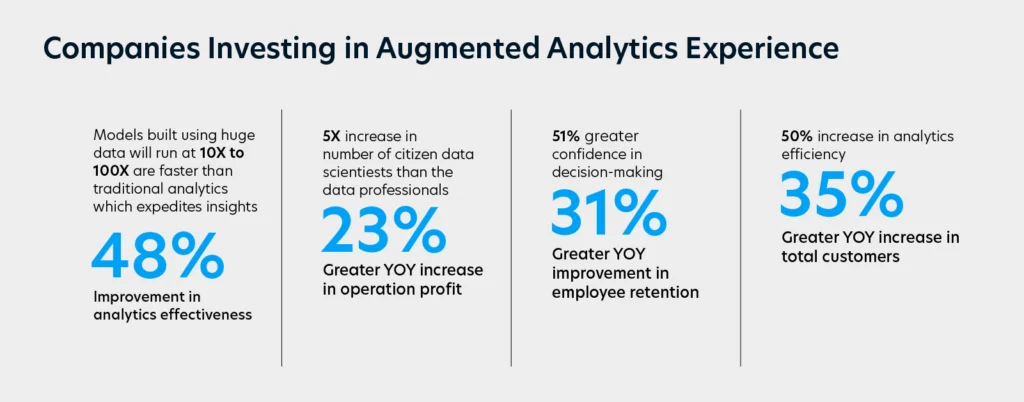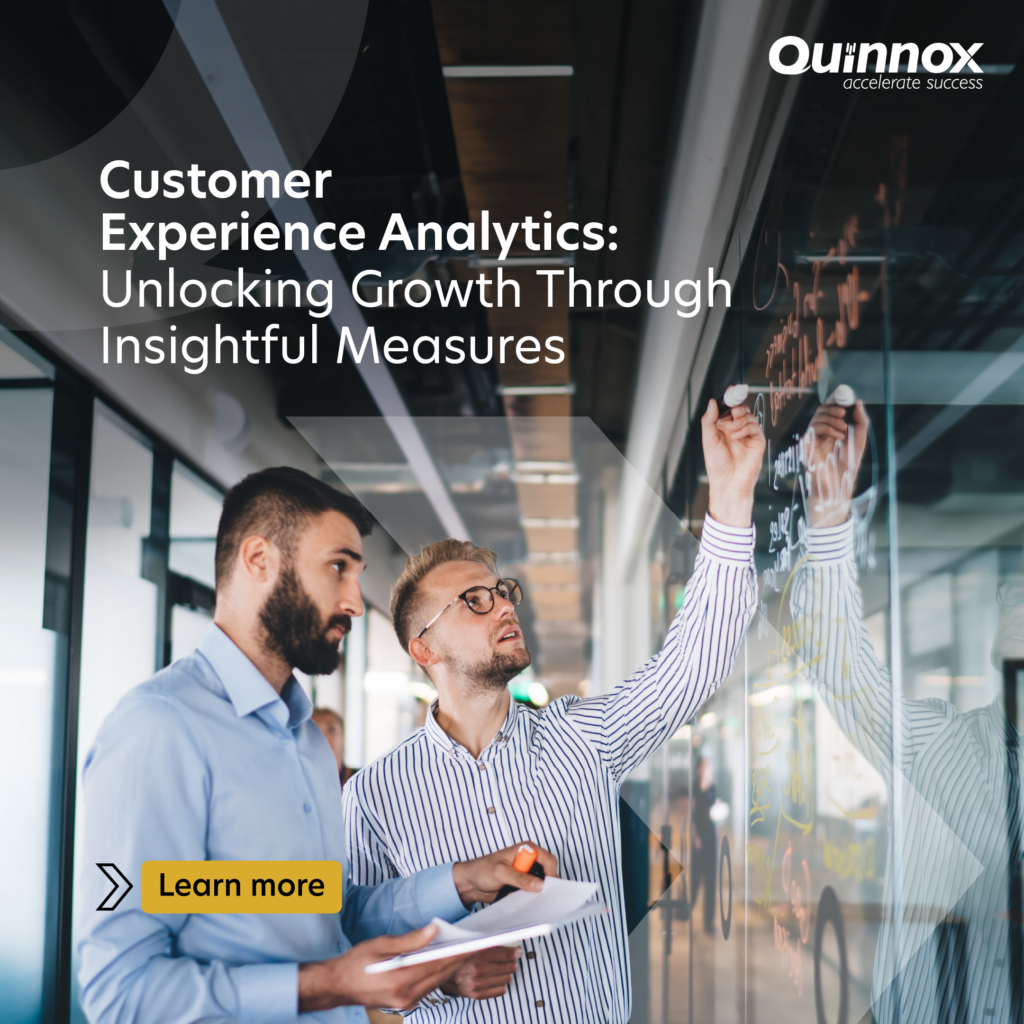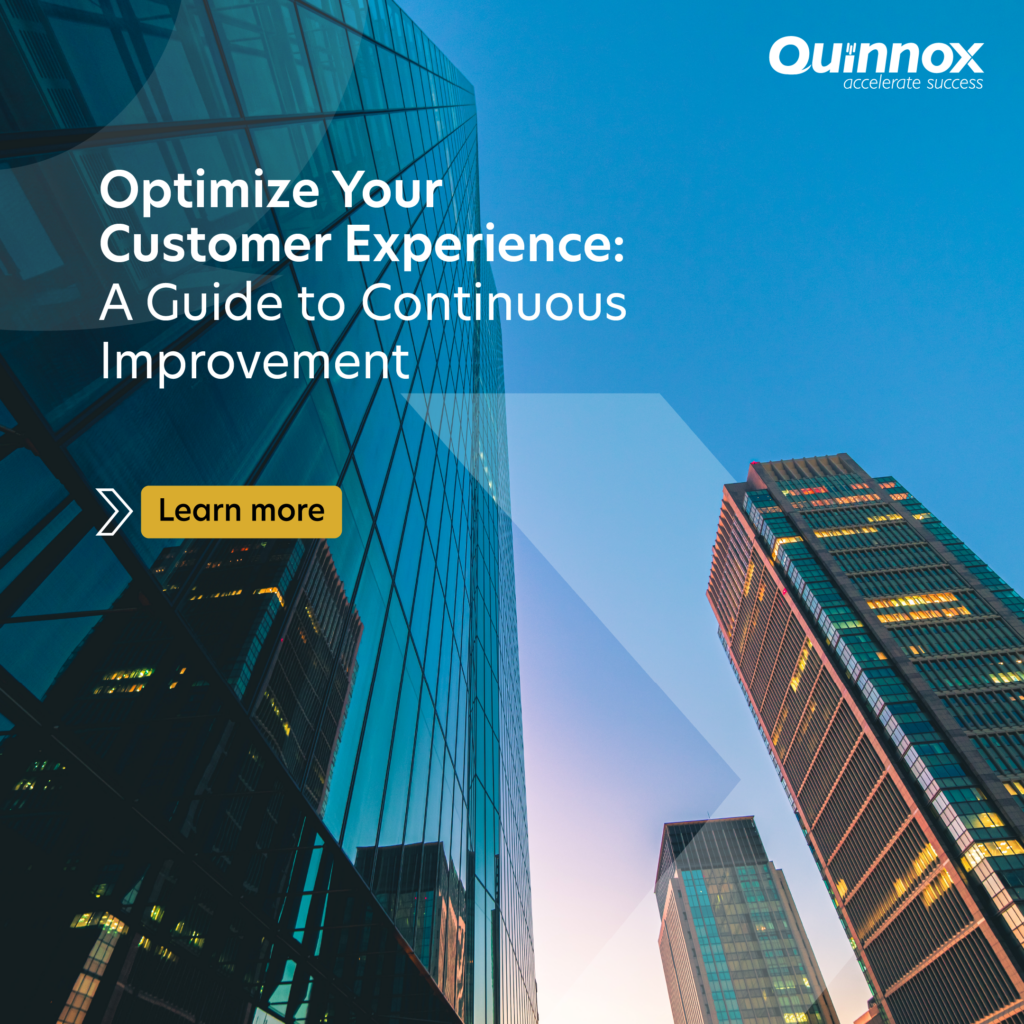A Comprehensive Guide: How to Successfully Implement AI Analytics in Your Business
The potential of AI analytics to optimize your business operations and drive innovation for seamless customer experience with data-driven solutions
Read moreAutomation in IT operations enable agility, resilience, and operational excellence, paving the way for organizations to adapt swiftly to changing environments, deliver superior services, and achieve sustainable success in today's dynamic digital landscape.
Next-generation application management fueled by AIOps is revolutionizing how organizations monitor performance, modernize applications, and manage the entire application lifecycle.
AIOps and analytics foster a culture of continuous improvement by providing organizations with actionable intelligence to optimize workflows, enhance service quality, and align IT operations with business goals.
Augmented analytics, a cutting-edge technology that combines artificial intelligence (AI) and machine learning (ML) capabilities, is reshaping the way businesses approach data analysis, making it more accessible and actionable for a wider range of users within an organization. By automating manual tasks, identifying trends, and generating insights in real-time, augmented analytics is democratizing data analysis and enabling decision-makers at all levels to leverage the power of data-driven insights. According to Gartner, by 2025, more than 40% of data science tasks will be automated, leading to increased productivity and efficiency across industries.
By integrating advanced analytics tools into their IT operations, businesses can uncover hidden patterns, forecast trends, and optimize processes with unparalleled precision. The impact of augmented analytics extends beyond traditional business intelligence, with organizations leveraging its capabilities to gain a competitive edge in today’s data-driven economy. For instance, Coca-Cola leveraging AI-driven image recognition combined with augmented analytics achieved a staggering 4x boost in their click-through rate for online advertising campaigns, allowing for more targeted and effective advertisements.
However, despite its transformative potential, implementing augmented analytics poses several challenges. From data privacy concerns to the complexity of integrating AI systems, businesses must navigate several hurdles to fully realize the benefits of this innovative technology.

Augmented analytics enables faster and more accurate decision-making by automating data preparation and insights generation. According to Gartner, augmented analytics was predicted to be a dominant driver of new purchases of analytics and business intelligence (BI), data science and machine learning platforms.
By democratizing data analytics, augmented analytics allows non-technical users to interact with and interpret data insights. This increased accessibility leads to more inclusive and diverse decision-making processes within organizations.
Automating routine tasks, such as data cleaning and report generation, augments human capabilities, allowing data scientists and analysts to focus on more complex and strategic tasks. This shift not only improves efficiency but also drives innovation.
Organizations can reduce the costs associated with data analytics by leveraging automated tools that require fewer human resources and lower maintenance costs. This is particularly beneficial for small to medium-sized enterprises (SMEs) looking to optimize their budgets.
The integration of AI and ML minimizes human errors in data analysis, providing more accurate and reliable insights. This accuracy is crucial for making data-driven decisions that can significantly impact business outcomes.
Challenge: Ensuring proper governance in AI systems is critical to maintaining ethical standards, transparency, and accountability. Without robust governance frameworks, organizations risk deploying biased or unethical AI models.
Solution: Establish a clear governance structure that includes policies for data usage, model validation, and ongoing monitoring. Implement AI ethics guidelines and ensure transparency by documenting decision-making processes and model outcomes. Regular audits and reviews can help in maintaining compliance and addressing any governance issues promptly.
Read More on how AI Regulations are navigating the evolving landscape globally
Challenge: Despite the potential of augmented analytics, user adoption can be slow due to resistance to change, lack of training, or unfamiliarity with new technologies.
Solution: Promote a culture of data literacy within the organization by providing comprehensive training programs and resources. Engage employees through workshops and hands-on sessions to demonstrate the practical benefits of augmented analytics. Leadership should actively endorse and participate in these initiatives to encourage wider acceptance.
Challenge: Ensuring the accuracy of data inputs and outputs is vital for reliable analytics. Inaccurate data can lead to flawed insights and poor decision-making.
Solution: Implement stringent data validation and cleansing processes to maintain high data quality. Utilize advanced data management tools that automatically detect and rectify anomalies. Regularly update data sources and conduct accuracy assessments to ensure the reliability of analytics outcomes.
Quick Insight: According to Monte Carlo Data’s 2024 Annual State of Data Quality Survey, 31% of respondents reported that data quality issues impacted 25% or more of their revenue, up from 26% in 2022
Challenge: With the increasing volume of data being processed, data security becomes a significant concern. Breaches can lead to loss of sensitive information and damage to the organization’s reputation.
Solution: Employ robust encryption techniques and access controls to safeguard data. Regularly update security protocols and conduct vulnerability assessments. Adopt a zero-trust architecture and ensure compliance with relevant data protection regulations such as GDPR or CCPA. Continuous monitoring and rapid incident response mechanisms are essential to mitigate security risks.
Challenge: Integrating augmented analytics tools with existing IT infrastructure can be complex and resource intensive.
Solution: Choose augmented analytics solutions that offer seamless integration capabilities with existing systems. Use APIs and middleware to facilitate smooth data flow between disparate systems. Engage IT and analytics teams collaboratively to identify integration challenges early and develop tailored solutions. Continuous testing and feedback loops can ensure successful integration and optimal performance.
Scenario: A large bank aims to enhance its fraud detection capabilities.
Solution: Using augmented analytics, the bank integrates data from multiple sources, including transaction records, customer profiles, and social media. ML algorithms analyze patterns and detect anomalies, significantly reducing fraudulent activities.
Scenario: A retail chain wants to optimize its supply chain and inventory management.
Solution: Augmented analytics tools analyze sales data, customer behavior, and external factors like weather and economic indicators. This helps the retailer predict demand accurately and manage inventory efficiently.
Scenario: An energy company seeks to improve its maintenance operations and reduce downtime.
Solution: By applying augmented analytics to sensor data from equipment, the company can predict failures and schedule proactive maintenance, thus minimizing disruptions.
Scenario: A logistics firm aims to optimize its delivery routes to reduce fuel consumption and improve efficiency.
Solution: Augmented analytics analyzes traffic patterns, weather conditions, and historical delivery data to suggest the most efficient routes for drivers.
Looking ahead, the future of augmented analytics holds immense promise for businesses seeking to extract actionable insights from their data. By leveraging advanced technologies such as AI and machine learning, organizations can uncover hidden patterns, predict trends, and optimize operations with unprecedented precision. According to a report by IDC, by 2025, 75% of organizations will shift from piloting to operationalizing AI, driving a significant transformation in how businesses harness the power of data.
With advancements in AI, machine learning, and natural language processing, augmented analytics will continue to evolve, offering increasingly sophisticated capabilities for data discovery, analysis, and interpretation. As organizations embrace augmented analytics as a strategic imperative, they must remain agile, adaptive, and ethically responsible to unlock its full potential and gain a competitive edge in the data-driven era.
At Quinnox, we understand navigating the complexities of augmented analytics requires a strategic approach and a trusted partner. With a focus on innovation, efficiency, and continuous improvement, we empower businesses to stay ahead in a data-driven world and capitalize on the opportunities that emerging technologies like AI, ML, and augmented analytics leveraging our AI-powered solutions tailored to address the unique challenges faced by businesses across various industries.
Let Quinnox empower your business to thrive in the era of augmented intelligence. Explore more about our AI-powered FutureOps platform, Qinfinite that intelligently integrates BizOps, FinOps, and ITOps, providing a single pane of glass for your business and IT ecosystem.




Want to know more about CX? Read interesting blogs below!
The potential of AI analytics to optimize your business operations and drive innovation for seamless customer experience with data-driven solutions
Read moreSeamless IT operations with predictive analytics capabilities of AIOps can transform your incident management and prevent costly downtimes with AIOps solutions.
Read moreIn an era where digital transformation is reshaping industries, the role of IT infrastructure in driving business success cannot be overstated
Read moreGet in touch with Quinnox Inc to understand how we can accelerate success for you.